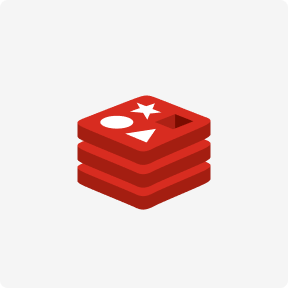It’s based on a long-term contract with a company for hiring contractors. This is more profitable than simply being located in a place with a lower average salary or taking advantage of professional specialization. Outsourcing and outstaffing are well-known terms among IT recruiters and professionals in the world of tech.
- If you’re not proficient in the required skills, you might find it hard to manage outstaffed employees.
- Outsourcing is the act of choosing a company or individual to handle specific tasks, while outstaffing is the practice of hiring professionals or contractors within your own organization.
- Recognizing the differences between outsourcing and outstaffing models can help you reveal the best approach for your projects.
- These specialists are often developers, designers, analysts, and others who perform the tasks they have been delegated.
- It all starts with finding an office space, recruiting talented engineers, and continues with legal compliance, HR payroll, and transparent accounting services.
Compile a list of outstaffing companies that fulfill your requirements. Both outsourcing and outstaffing are viable solutions for you, depending on your business requirements. Here’s how to make a choice facing the outstaffing vs outsourcing dilemma. Both outstaffing and outsourcing can be financially-viable, depending on your company’s goal.
What is Outsourcing
Choose outsourcing when you have occasional or recurring non-core tasks. We have successfully replicated 370+ projects and continue to prove our clients’ trust. The main problem boils down to the fact that if the channels are not well established, you may have problems with communication and understanding of tasks. If this is the case, Outsourcing could be a better option, but the outstaffing of administrative roles could also be the right move.
Outsourcing, on the other hand, refers to the process of delegating a specific business function or activity to an external service provider. In other words, when you source — you look for service providers, employees, or suppliers. When you outsource, you delegate tasks or projects to the already-found service provider.
In-house expertise
Dwelling on the difference between onshoring and offshoring, it’s vital to mention that there may exist various combinations of delegation modes and locations. Contrary to this, an outstaffing vendor doesn’t intrude into your work with their software engineers. To be honest, the outstaffing model is rarely effective for tech product companies that strive to obtain funding.
Although an outstaffing IT model is comparable to outsourcing, engaging talent through outstaffing has different characteristics. With the outsourcing development model, you won’t have to manage your development, but you also won’t be able to control it and track every step fully. These drawbacks won’t affect the process if you partner with a reliable and professional agency that doesn’t try to overcharge you for mediocre services. Alongside these advantages, you should also compare the disadvantages of outsourcing product development. Does it feel like a catch-22 when it’s time to choose what’s right for your business?
How to Choose What’s Better for Your Business
Let’s take a closer look at the pros and cons of outsourcing software development to determine whether it’s worth the hype. Because the firm you outsource to functions as a temporary team for a specific outsourcing outstaffing project, often, your in-house team doesn’t even require IT staff. Implementing this approach can be time-consuming initially, but it’s by far the most cost-effective solution in the long run.
Outstaffing is when a company hires remote IT professionals or teams from an external service provider to work on specific projects or tasks. Instead of hiring new employees or expanding their in-house IT department, companies can tap into the expertise and skills of external IT specialists on a flexible basis. Basically, outstaffing in IT involves hiring remote professionals from external service providers to handle specific tasks or projects. To cover all the essential points about outstaffing, we’ve chosen the Q&A format for this article.
Pros & Cons of Outstaffing
Similarly, you may stop the cooperation with particular developers once the project is over. In other words, the client can simply scale up and down their teams whenever they need it. This employment model is probably one of the most flexible hiring models available. You can easily adjust schedules, the level of involvement, set directions, and delegate specific tasks and projects. At the same time, you don’t have to manage payroll, HR, or other hurdles related to in-house team maintenance — the vendor will handle it for you.

Below we look at how outsourcing and outstaffing may differ in quality despite the availability of skilled personnel. Considering that the client has unlimited influence over the development team, they also determine the pace at which the programmers build the software. Once a contractual agreement is signed, the client gives the outsourcing company clear instructions, intended software specifications, and overall expectations of the end product. All the client does is wait for the programmers to deliver an efficient product. It means an agreement between companies when one hires another company for a planned activity that is usually done internally, sometimes transferring its employees. Consider implementing outstaffing vs outsourcing practices into your workflow.
Here’s Why You Should Hand Over Product Prioritization to Engineering Managers
When you outsource to a different country, there can be difficulties due to cultural differences. This includes different working hours and practices, which can make coordination more challenging. Additionally, outstaffers may not understand the same ethical standards that you would expect from your own employees. Outsourcing gives you access to a large talent pool because you can hire people from different countries instead of your own. Outsourcing is considered efficient because it operates at a cost per hour. The client pays only for the work the remote team does directly in the process.

With outstaffing, you can have the benefit of retaining full control over your team and managing the development process as you see fit. In any case, the outsourcing provider isn’t obliged to consult with the client when it comes to team creation. However, each case is unique, and it’s always a good choice to consult with the experts first. If you need an expert opinion on software development outsourcing or outstaffing, you are welcome to ask our experts here at TechCells. We are sure that we can help you regarding your concerns, as this is what our core expertise is.
It never happens instantly. The business game is longer than you know.
In this situation, they don’t control the development process but seek the ultimate result. Cooperation with external providers of IT services is a common way to handle growing projects. When a tech leader is tasked with delegating a set of software development activities, outsourcing https://www.globalcloudteam.com/ is probably the first thing that comes to mind. However, in recent years, the market of IT services has grown to include several offshoots of the outsourcing concept. If you’re new to software development, it may be difficult to find and hire professionals for your project.